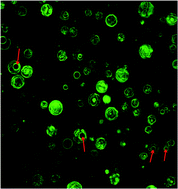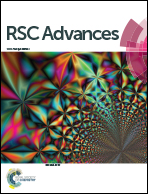Encapsulation of honokiol-loaded nanoparticles in lecithin microbubbles for targeted tumor therapy
Abstract
This study aimed to develop a new drug delivery system that combines honokiol-loaded albumin nanoparticles (HKNs) with perfluorocarbon-filled microbubbles (MBs) to improve the target delivery of honokiol (HK). The HKNs were prepared through a desolvation method. The MBs were prepared by mechanical shaking and used to encapsulate the HKNs and perfluorocarbon gas (HKN-MBs). The prepared HKN-MBs displayed a mean diameter of 1447.0 ± 182.4 nm and a drug-loading efficiency of 3.48% ± 0.20%. The HKN-MBs demonstrated good acoustic properties in in vitro and in vivo ultrasound (US) imaging experiments, in which no significant difference to traditional MBs was found. The HKN-MBs had high drug encapsulation and loading efficiency while maintaining the acoustic properties as an US contrast agent. C57BL/6 mice with Lewis lung carcinoma tumor were treated with HKN-MBs through the tail vein and then exposed to an US destruction pulse, resulting in an improved curative effect on the tumor tissues. The experimental group administered with HKN-MBs and exposed to US showed an obvious increase in the rate of tumor growth inhibition (48.78%) compared with those of HKN-MBs (32.85%) and HKNs (29.94%). Encapsulation of HKNs in MBs is expected to improve the therapeutic efficacy of HK and provide a feasible technique for targeted tumor therapy.


 Please wait while we load your content...
Please wait while we load your content...